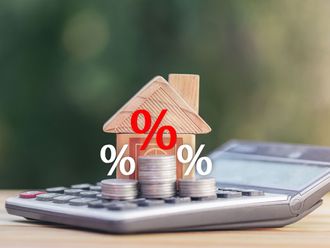In recent months, the biggest question for investors and developers alike has been about the actual performance of affordable housing units. Which communities and units in particular can be defined as affordable housing? And what has been the reaction of resident buyers for such offerings?
Amid a plethora of reports that all talk of the rise of mid-income housing, using catchphrases such as ‘affordable luxury’, the predominant feedback appears to be that affordable housing hasn’t fared much better than the rest of the market. For this maxim to be examined, it is worth scrutinising the data to ascertain what the actual experience has been for this segment in the last three years.
In Dubai, as well as internationally, the first time-buyer is critical to the health of the real estate market, as it allows for a fresh influx of capital and allows existing owners to upgrade (assuming the first-time purchases are made in the secondary market, which is starting to be the experience of Dubai as well).
Data suggests that for the median income buyer with an average family size of four, the minimum purchase that can be contemplated is that of a two-bedroom unit. When looking at demographic income data, the median ticket price for such a unit is approximately Dh800K, rendering most of the offerings in the freehold market out of reach for such owner-occupiers.
However, there are a select few communities where such offerings were made in 2012 and when we examine the price action there, the data reveals a striking pattern. In the CBD district in International city, the average two-bedroom apartment has appreciated not only much more than the citywide index since 2012, it has outperformed the luxury segment by an astonishing 25 cent.
Similarly, in the Dubai Residential Community, data from a prominent building complex shows a two-bedroom apartment has outperformed the citywide index by 16 per cent in the last 3 years.
The above experience has been accompanied by two crucial factors: 1) the price action has been witnessed against the backdrop of very few transactions and 2) the average time taken to close these transactions has been nearly three times as long as it has been to close either smaller units in the same community as well as higher ticket prices in more affluent communities.
Not surprisingly, developers have either responded by offering a multitude of one-bedrooms and studios, and/or have gone towards the luxury segment to cater to higher levels of demand. However, it is pertinent to note here that in the real estate market, lower transactions actually are a signal for end-user capital formation. The higher the velocity of transactions in the secondary market in any real estate community, the greeter the likelihood that there is “hot money” and/or investment flows being attracted. Secondly, and perhaps more critically, experience from international markets suggests that the average time taken to close a real estate transaction for end-users is approximately three times as long as it takes for an investment transaction in the mid-income space, suggesting that Dubai’s experience thus far has broadly mirrored what has been witnessed in more mature markets.
The price action in these communities clearly suggests that where viable alternatives are offered to the mid-income space, the return on equity for such investments clearly outperforms the luxury segment in this latest cycle of real estate dynamics. This suggests that not only are expatriate mid-income residents looking for such options, but are actively capitalising on it when such opportunities present themselves.
Not surprisingly, in the current slowdown, the new zeitgeist has been the talk of attracting such first-time buyers. However, the lure of higher margins in the city for the luxury segment has thus far prevented a sustainable rise in such a segment, and it will be interesting to perceive how this dynamic manifests itself in new communities such as Dubai South, IMPZ and the like.
It is clear that given Dubai’s ambitious rate of development, the city will continue to rely on an influx of foreign investment in real estate. It is pertinent to note here that an interesting dynamic has already playing out in the luxury segment.
Affluent resident expatriates have already purchased and/or are purchasing properties for their own use at the higher end of the market. This dynamic has especially been evident in blue-ribbon gated communities such as Emirates Hills and Palm Jumeirah.
For the bulk of the expatriate population, rental remains the predominant option, and part of the reason for this choice has been the paucity of supply for the median income buyer. For the real estate market to achieve a balance, there needs to be an increasing amount of offerings in this space, and it is addressing this imbalance that will likely remain the predominant theme of the sector in the years leading up to Expo 2020.
— The writer is Managing Director of Global Capital Partners.











